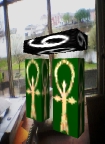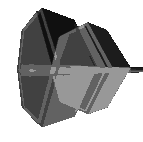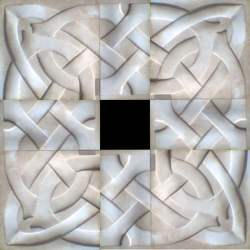|
Here's another airbrush animation that
I did early in the development of this site. It serves no purpose other
than to clog up the server and irritate by downloading slowly but it
took some time to do and I'm damned well going to use it somewhere.
Here seems as good a place as any...
|
|
If the taut string is plucked or "twanged" the rotor will start to spin and at the same time seek to move to the central point of the speaking length: the octave node.
 |
|
|
|









